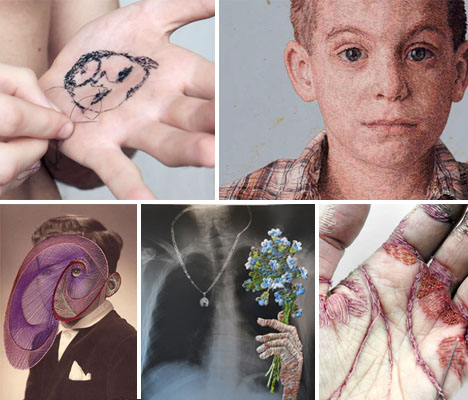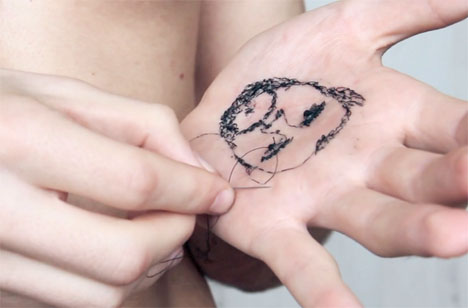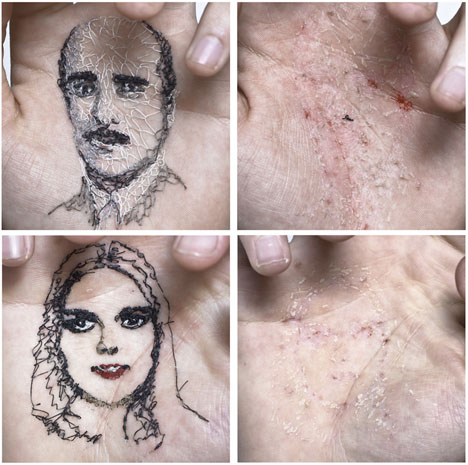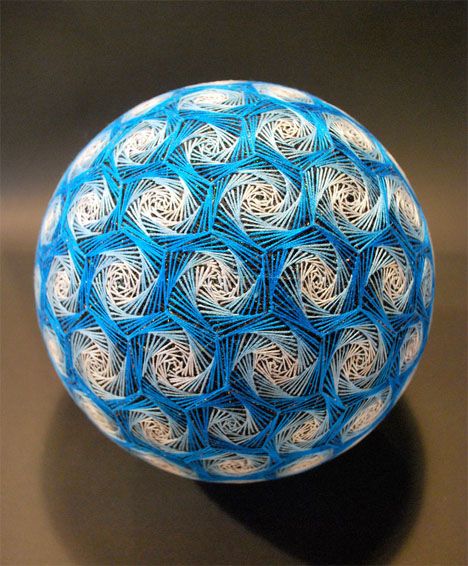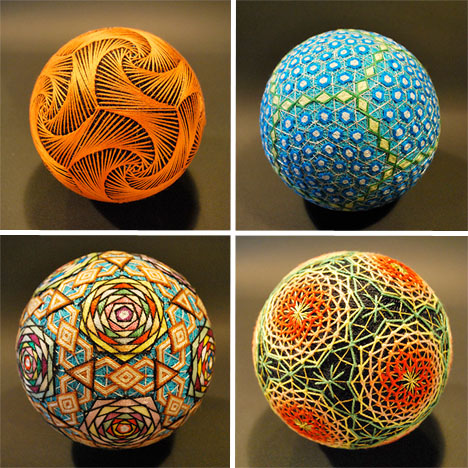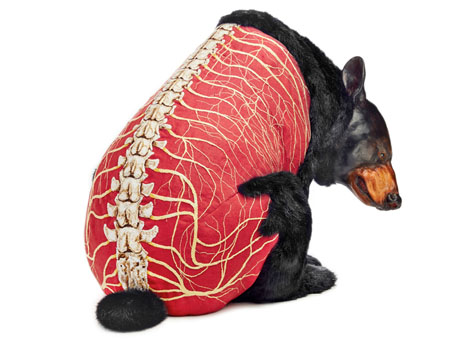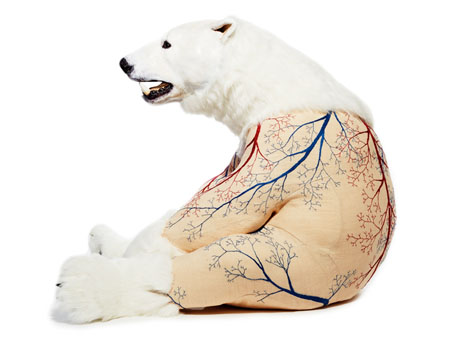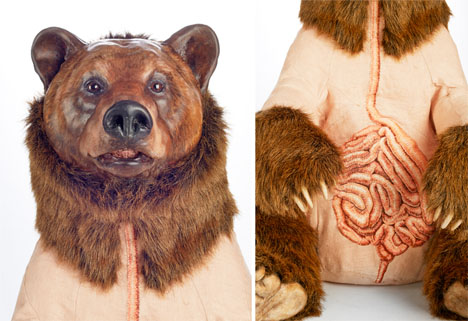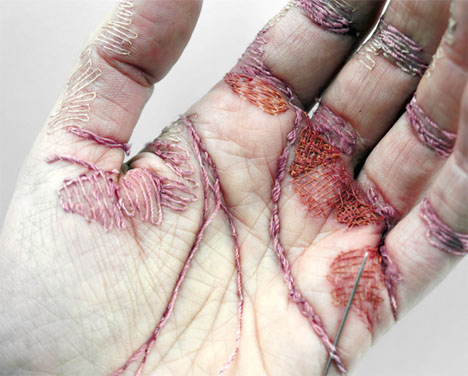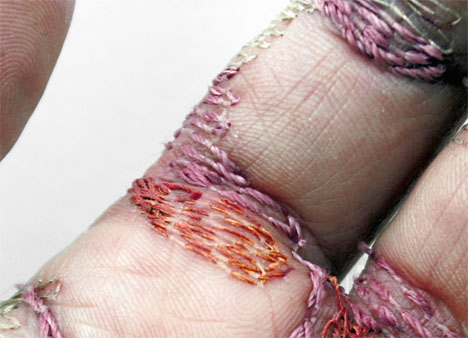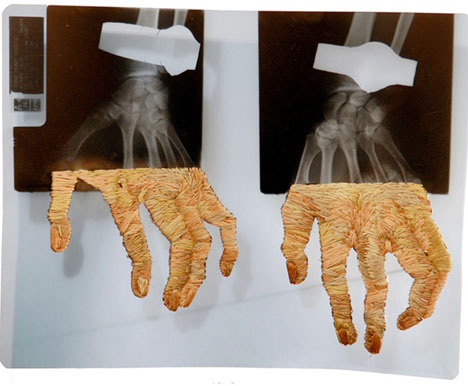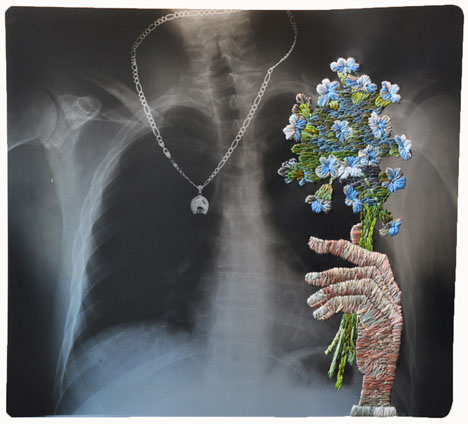This ain’t your grandmother’s cross-stitched bible verses. Contemporary artists exploit, subvert and otherwise manipulate the traditional craft of embroidery with hyperealistic portraits, surreal seemingly LSD-induced additions to old photos or pretty flowers added to actual x-rays. Some even use bread – or their own skin – as the canvas for their threaded creations.
Family Portraits Sewn into the Palm of an Artist’s Hand
Combining visual and performance art, David Cata sews portraits of his family members into the palm of his own hand, poking the thread through the topmost layer of skin. The series symbolizes people who have ‘left their mark’ on the artist’s life, just as the portraits leave their mark on his skin. “Their lives have been interwoven with mine to build my history, every moment lived stays in the memory to finally be forgotten. Somehow, this fact is painful, since there are only material things and traces that people leave behind.”
Traditional Temari Spheres by 88-Year-Old Grandmother
Flickr user NanaAkua shares photos of the 500-odd, incredibly intricate temari spheres embroidered by her 88-year-old grandmother. Temari balls are a form of Japanese folk art (of Chinese origin), often made from the thread of old kimonos and given as gifts to children on New Year’s Day.
Bear Sculptures Embroidered with Anatomy
Bears are seemingly turned inside-out with embroidery of their anatomy in stunning lifelike sculpture by Deborah Simon. Measuring about two feet square, the sculptures reveal internal organs, musculature, skeletons and nerves. The series highlights how human desire for their pelts puts these majestic creatures in danger. “Bears are the ultimate stuffed animals; both the iconic plush toy and the prized taxidermy specimen for hunters,” says Simon. “Most of the sculptures deal with vulnerability; the vulnerability that the animals face from environmental degradation, conflicts with people, suburban sprawl and poaching. I particularly find the dichotomy between the defanged, declawed childhood toy and the fierce reality of a top predator fascinating.”
Embroidered Flesh by Eliza Bennet
David Cata isn’t the only artist using the thick, relatively bloodless skin of his palms as a surface for embroidery. Eliza Bennet uses a similar method, but her work invokes more of a visceral reaction of disgust for its visual mimicry of wounds. The idea is to highlight the idea of embroidery being women’s work, and women’s work being ‘easy.’ Bennet notes that many low-paid jobs typically aligned with women, like cleaning, caring and catering, can be difficult and labor-intensive. “Through a personally charged perception, I explore a range of issues relating to the formlessness of both individual and social reality,” she says.
Embroidered X-Rays by Matthew Cox
Traditional embroidery is juxtaposed with plastic x-ray film in this series by Matthew Cox, superimposing images of vivid life on top of the stark white-bones-on-black. Fleshy hands hold flowers, or reach up toward the sky.
